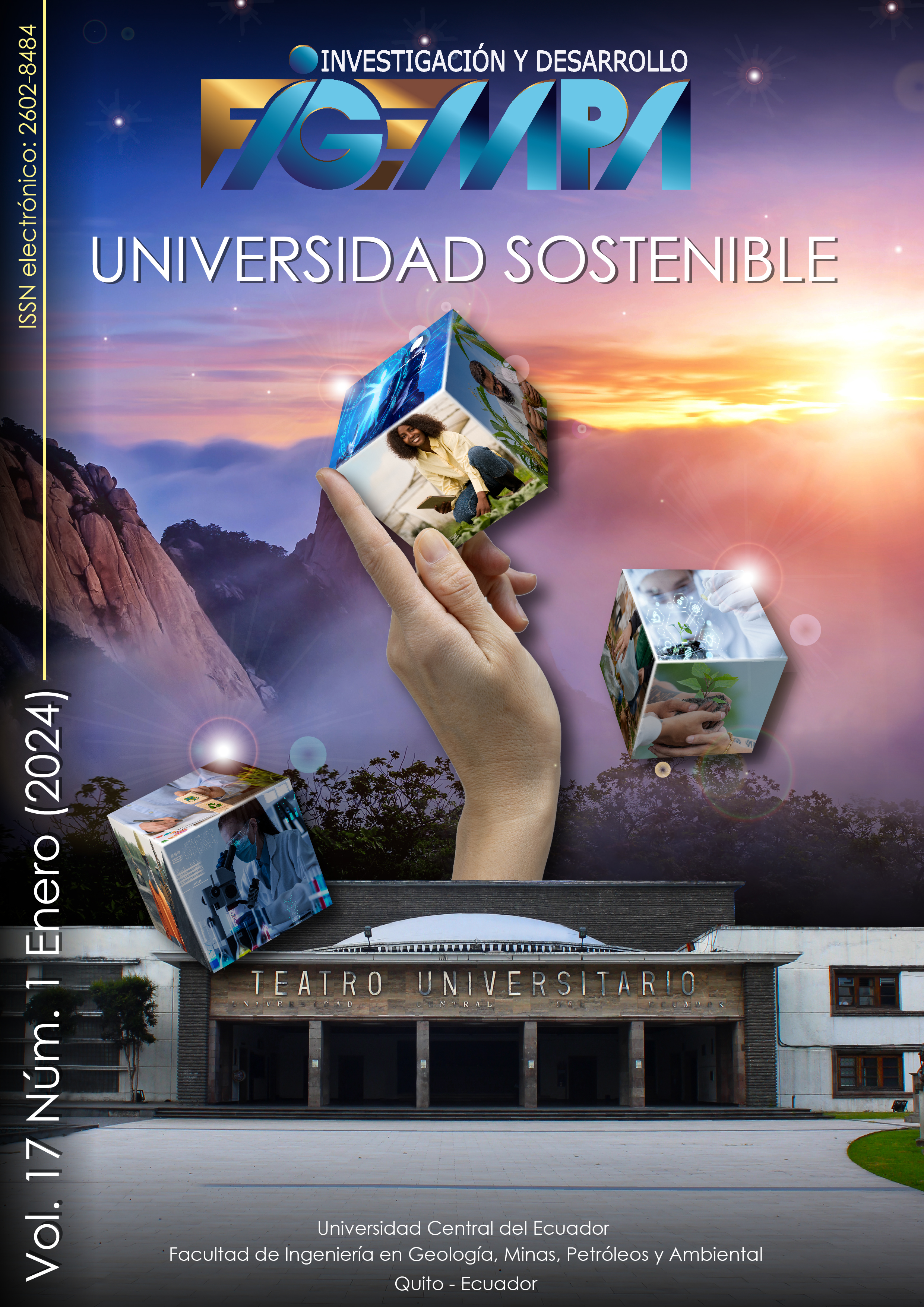Heterogeneous Energy Consumptions in Household Typologies of Ecuador´s Residential Sector
Main Article Content
Abstract
There is a growing interest in reducing energy consumption in the economic sectors, where the residential sector is a substantial consumer of energy in societies and therefore, a focus of attention for efficiency and renewable energy generation policies. In Ecuador, residential consumption represents 1/4 of the total electricity demanded by the socioeconomic system. Household composition has changed due to demographic dynamics, socioeconomic improvements and social justice efforts, which impacts electricity consumption. The aim of this study is to analyze the dynamics of energy consumption in Ecuador´s residential sector based on the construction of household typologies under the hierarchy of demographic, geographic, economic and technical variables using a top-down and bottom-up methodology and the application of MuSIASEM for which statistical information from National Surveys and Censuses was used, which allowed the construction of household typologies and their consumption pattern. The results show heterogeneous electricity consumptions in the 4.5 million households in 2017 hierarchically divided into 240 typologies. The pattern varies from the lowest consumption households with 50 KWh/month to the highest consumption of 350 KWh/month. For example, in the urban area the highest rate is concentrated in households made up of more than 8 people with rates between 150 to 180 KWh/month, while in the rural area the values range from 90 to 120 KWh/month but differ by geographic location and male or female headship. Likewise, the data allowed scaling to aggregate levels where it is shown that, of the total annual electricity consumption of 6,428 GWh, 54% of the consumption was concentrated in the coastal region, which concentrates 51% of the total households in the residential sector of Ecuador.
Downloads
Metrics
Article Details

This work is licensed under a Creative Commons Attribution 4.0 International License.
References
Allen, T.F.H. and Starr, T.B. (1982) Hierarchy. Chicago: University of Chicago Press.
ARCERNNR (2020). Resolución Nro. ARCERNNR-033-2020. Agencia de Regulación y Control de Energía y Recursos Naturales no Renovables. http://www.controlrecursosyenergia.gob.ec/servicio-publico-de-energia-electrica-spee/
ARCONEL (2019) Resolución Nro. ARCONEL-035-19. Agencia de Regulación y Control de Electricidad. https://www.cnelep.gob.ec/wp-content/uploads/2020/01/resoluci%C3%B3n_nro._arconel-035-19_certificado_1.pdf
ARCONEL (2020) Resolución Nro. ARCONEL-005-20. Agencia de Regulación y Control de Electricidad. https://www.gob.ec/regulaciones/regulacion-no-arcernnr-00520
Cisneros, P. y Lara, E. (2020) ¿Por qué es importante la perspectiva de género en el sector energético? Banco de Desarrollo de América Latina y El Caribe CAF. https://www.caf.com/es/conocimiento/visiones/2020/08/por-que-es-importante-la-perspectiva-de-genero-en-el-sector-energetico/
Georgescu-Roegen, N. (1971) The entropy law and the economic process. Cambridge, MA: Harvard University Press. DOI: https://doi.org/10.4159/harvard.9780674281653
Giampietro, M. (1997) Socioeconomic pressure, demographic pressure, environmental loading and technological changes in agriculture. Agriculture, Ecosystems and Environment, 65(3), pp. 201‐229. https://doi.org/10.1016/S0167-8809(97)00050-9 DOI: https://doi.org/10.1016/S0167-8809(97)00050-9
Giampietro, M. (2003). Multi-scale integrated analysis of agro-ecosystems. Boca Raton, FL: CRC Press. DOI: https://doi.org/10.1201/9780203503607
Giampietro, M. and Mayumi, K. (2000) Multiple-scale integrated assessment of societal metabolism: Introducing the approach. Population and Environment, 22(2), pp 109–153. https://doi.org/10.1023/A:1026691623300 DOI: https://doi.org/10.1023/A:1026691623300
Giampietro, M., Mayumi, K., and Sorman, A.H. (2011) The Energetics of Modern Societies – Cutting through the confusion. Springer. ISBN 9781461400219
Giampietro, M., Mayumi, K., and Sorman, A.H. (2012) The Metabolic pattern of societies: where economists fall short. London: Routledge. DOI: https://doi.org/10.4324/9780203635926
IEA (2023) Buildings - Energy System. Available at: https://www.iea.org/energy-system/buildings
Jiménez Morí, R. A. y Yépez-García, A. (2020) ¿Cómo consumen energía los hogares?: Evidencia en América Latina y el Caribe. Banco Interamericano de Desarrollo. http://dx.doi.org/10.18235/0002874 DOI: https://doi.org/10.18235/0002874
Koestler, A. (1968) The ghost in the machine. New York: The MacMillan Co.
Ministerio de Energía y Minas (2022) Balance Energético Nacional BEN 2022. https://www.recursosyenergia.gob.ec/wp-content/uploads/2023/08/wp-1692740456472.pdf
O'Neill, R.V. (1989) 10. Perspectives in hierarchy and scale. In: Roughgarden, J., May, R.M., Levin, S. (Eds). Perspectives in Ecological Theory, pp. 140-156. Princeton, NJ: Princeton University Press. https://doi.org/10.1515/9781400860180.140 DOI: https://doi.org/10.1515/9781400860180.140
Parra, R., et al. (2018) The metabolism of oil extraction: A bottom-up approach applied to the case of Ecuador. Energy Policy, 122, pp. 63–74. https://doi.org/10.1016/j.enpol.2018.07.017. DOI: https://doi.org/10.1016/j.enpol.2018.07.017
Parra, R., Bukkens, S.G.F. and Giampietro, M. (2020) Exploration of the environmental implications of ageing conventional oil reserves with relational analysis. Science of the Total Environment, 749. https://doi.org/10.1016/j.scitotenv.2020.142371. DOI: https://doi.org/10.1016/j.scitotenv.2020.142371
Pattee, H.H. (ed.) (1973) Hierarchy theory: the challenge of complex systems. International library of systems theory and philosophy. New York: George Braziller, Inc. ISBN 080760674X. OCLC 638741
Pérez-Sánchez, L., Velasco-Fernández, R. and Giampietro, M. (2022) Factors and actions for the sustainability of the residential sector. The nexus of energy, materials, space, and time use. Renewable and Sustainable Energy Reviews, 161. https://doi.org/10.1016/j.rser.2022.112388. DOI: https://doi.org/10.1016/j.rser.2022.112388
Ríos, A., Guamán, J. and Vargas, C. (2018) Analysis of the implementation of a Strategy for Energy Consumption Reduction in the Residential Sector of Ecuador: Impact Evaluation in the Energy Matrix. Revista Técnica energía, 15 (1), pp. 98-109. ISSN 2602-8492. https://doi.org/10.37116/revistaenergia.v15.n1.2018.328 DOI: https://doi.org/10.37116/revistaenergia.v15.n1.2018.328
Simon, H. A. (1962) The architecture of complexity. Proceedings of the American philosophical society, 106 (6), pp. 467-482. https://www2.econ.iastate.edu/tesfatsi/ArchitectureOfComplexity.HSimon1962.pdf
Strydom, A., Musango, J.K., and Currie, P. K. (2019) Conceptualizing Household Energy Metabolism: A Methodological Contribution. Energies, MDPI, 12(21), pp. 1-19. https://www.mdpi.com/1996-1073/12/21/4125/pdf DOI: https://doi.org/10.3390/en12214125
Van den Brom, P., Meijer, A. and Visscher, H. (2018) Performance gaps in energy consumption: household groups and building characteristics. Building Research and Information, 46(1), pp. 54–70. https://doi.org/10.1080/09613218.2017.1312897. DOI: https://doi.org/10.1080/09613218.2017.1312897
Velasco-Fernández, R., Ramos-Martín, J. and Giampietro, M. (2015) The energy metabolism of China and India between 1971 and 2010: Studying the bifurcation. Renewable and Sustainable Energy Reviews, 41(1), pp. 1052–1066. https://doi.org/10.1016/j.rser.2014.08.065. DOI: https://doi.org/10.1016/j.rser.2014.08.065
Zhang, Q., Zhuang, S. and Yang, H. (2003) Comparison of Residential Energy Consumption in China, Japan, Canada and USA. Journal of Asian Architecture and Building Engineering, 2(1), pp. 101–106. https://doi.org/10.3130/jaabe.2.101. DOI: https://doi.org/10.3130/jaabe.2.101

